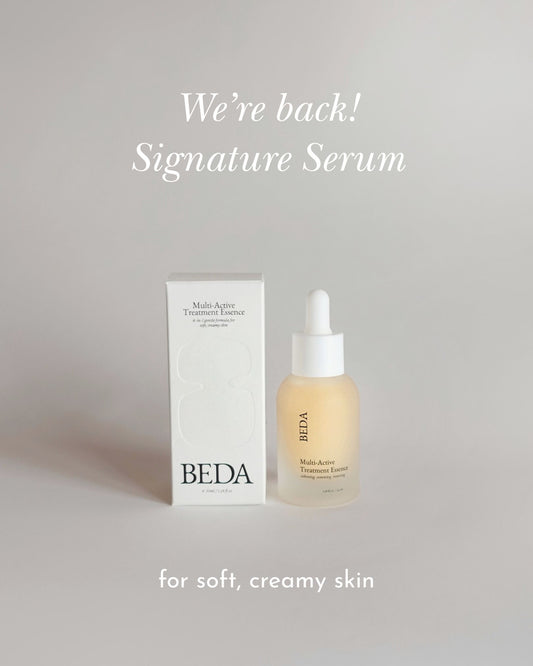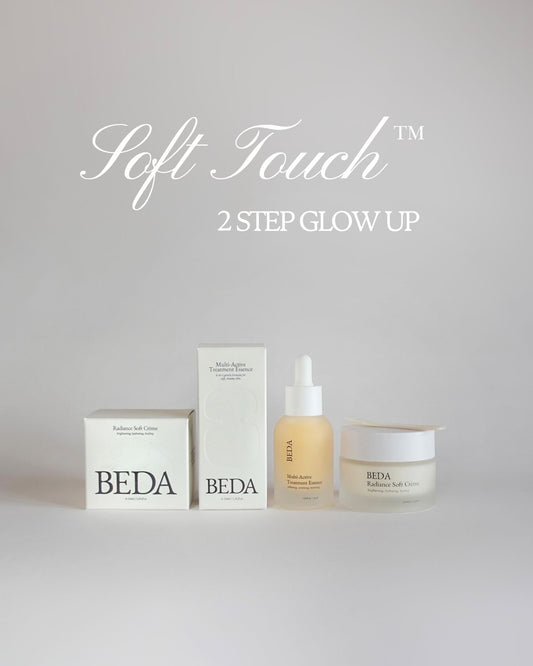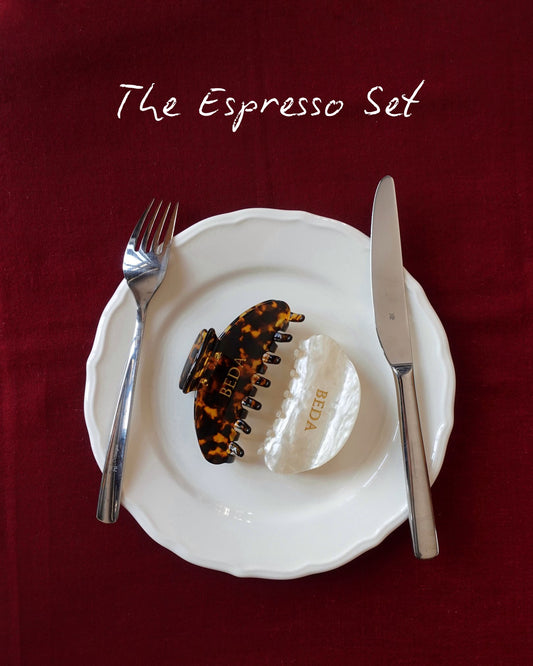We’ve all been there—dealing with stubborn breakouts that just won’t budge, no matter how many acne treatments you throw at them. But what if your acne isn’t actually acne?
Enter: fungal acne. It looks similar to traditional acne, but the cause (and cure) are completely different.
Knowing the difference is key to getting your skin back on track. Let’s break it down.
Table of contents
What is Fungal Acne?
Despite its name, fungal acne isn’t actually acne in the traditional sense.
Instead, it’s triggered by an overgrowth of Malassezia, a type of yeast that naturally exists on your skin. Under normal conditions, this yeast is harmless, but when it multiplies too much, it can clog hair follicles and lead to small, acne-like breakouts.
These breakouts closely resemble regular acne, making it tricky to identify. However, unlike bacterial acne, fungal acne doesn’t respond to typical acne treatments—in fact, some products may even make it worse.

How to Spot Fungal Acne:
Small, uniform red or skin-coloured bumps (papules or pastules)
Often appears in clusters on the forehead, chest, back, or shoulders
Feels itchy or tingly (normal acne should not feel itchy)
Worsens in hot, humid environments or after sweating
What is Normal Acne?
Regular acne, or acne vulgaris, is caused by a mix of excess oil, clogged pores, bacteria (Propionibacterium acnes), and inflammation. It can appear in different forms—blackheads, whiteheads, pustules, and cystic breakouts.
How to Spot Normal Acne:
A mix of whiteheads, blackheads, and inflamed pimples
Often appears on the face, especially the T-zone, jawline, and chin
Can be triggered by hormones, stress, diet or skincare products
Responds to acne-fighting ingredients like salicylic acid and benzoyl peroxide
Fungal vs. Normal Acne: Key Differences
Feature |
Fungal Acne |
Normal Acne |
|---|---|---|
Cause |
Yeast overgrowth (Malassezia) |
Bacteria, oil, clogged pores |
Appearance |
Small, uniform, itchy bumps |
Mix of whiteheads, blackheads, pustules, and cysts |
Location |
Forehead, chest, back, shoulders |
Face (T-zone, jawline), body |
Triggers |
Humidity, sweat, antibiotics, occlusive skincare |
Hormones, diet, stress, bacteria |
Treatment |
Antifungal ingredients like ketoconazole, sulfur |
Acne treatments like salicylic acid, benzoyl peroxide |
How to Treat Fungal Acne
If you suspect fungal acne, here’s how to get it under control:
Use Antifungal Ingredients
You may or may not have seen people online recommending using anti-dandruff shampoo to treat acne. Surprisingly, it does work! Anti-dandruff shampoos help with fungal acne due to antifungal ingredients like ketoconazole, zinc pyrithione, and selenium sulfide.
Although we don’t recommend using shampoos on your face especially if you have sensitive skin, this can be a good option in a pinch. Use it as a face or body wash a few times a week—especially on the forehead, chest, and back—and leave it on for a minute before rinsing for best results.
Keep Your Skin Dry
For our gym girlies and pilates princesses, be sure to wash your face right after your workouts. Change out of sweaty clothes ASAP and avoid heavy, occlusive skincare products, as both can trap moisture and create the perfect environment for Malassezia to thrive.
Sweat, heat, and humidity can exacerbate fungal overgrowth, leading to persistent breakouts. Wearing breathable fabrics and opting for lightweight, non-comedogenic skincare can help keep your skin balanced and prevent further irritation.
Want more tips on how to navigate the humidity?:
Look For Green Tea or Chamomile Extracts
Seek out skincare with green tea and chamomile extracts, as they help reduce inflammation and control Malassezia growth. Green tea offers natural antifungal and antioxidant benefits, while chamomile soothes irritation and promotes skin recovery—both ideal for managing fungal acne.
Check out our previous blogs for an in depth look as to why these two ingredients are so effective for sensitive acne-prone skin:
Avoid Antibiotics & Heavy Oils
Funny story (well not so funny), but one time I thought I was having a really bad breakout and decided to try slugging and it made my skin so much worse. This was because I was experiencing fungal acne.
Heavy oils can feed the yeast and make things worse by disrupting your skin’s microbiome and creating the perfect environment for Malassezia to thrive. Antibiotics can wipe out beneficial bacteria that keep yeast in check, while heavy oils trap moisture, fueling fungal overgrowth.
Opt for lightweight, non-comedogenic products instead and let your skin breathe.
Exfoliate Wisely
AHAs like lactic and mandelic acid can help with fungal acne indirectly by gently exfoliating the skin and preventing clogged pores. However, they don’t actively target Malassezia the way antifungal ingredients do.
Glycolic acid and some AHAs can actually make fungal acne worse by fueling yeast overgrowth. If you're dealing with it, go easy on exfoliation and focus on antifungal treatments like ketoconazole or sulfur for real results.
How to Treat Normal Acne
If it’s classic acne, stick to these essentials:
Gentle Chemical Exfoliants
Gentle chemical exfoliants like salicylic acid, lactic acid, and mandelic acid help clear normal acne by unclogging pores, reducing excess oil, and smoothing skin texture. Unlike scrubs, they work without irritation—salicylic acid dives deep to clear breakouts, while AHAs like lactic and mandelic acid gently resurface and fade post-acne marks. The result? Clearer, balanced skin without the harshness.
Eat Your Skincare to Heal From the Inside Out
What you put on your skin matters, but what you eat plays a huge role too. Nourishing your body with skin-loving nutrients—like omega-3s, antioxidants, and probiotics —can help reduce inflammation, balance oil production, and support your skin barrier from the inside out.
Think fatty fish, leafy greens, berries, and fermented foods for a gut-friendly, glow-boosting diet. Hydration is key too—swap sugary drinks for water or herbal teas to keep your skin clear and happy. When you fuel your body right, your skin thanks you.
Luck for you, we have a whole page full of skin food recipes if you need ideas.
Holistic Habits
Holistic habits play a big role in your skin’s health too. Beyond eating your skincare, simple lifestyle changes—like managing stress with soft thoughts, switching out pillowcases, getting quality sleep, and keeping your makeup brushes clean —can make a real difference. Each of these small habits helps reduce breakouts, support your skin barrier, and keep inflammation in check.
We’ve got a detailed guide on each one to help you get closer to your skin goals—because great skin is more than just skincare.
Powerhouse Ingredients
Powerhouse ingredients like retinoids and niacinamide can be a great edition to your routine. Retinoids speed up cell turnover, unclogging pores and preventing breakouts, while also boosting collagen for smoother skin over time. Niacinamide, on the other hand, calms inflammation, controls oil production, and strengthens the skin barrier.
Be sure that when you are introducing strong ingredients like retinoids, niacinamide and chemical exfoliants like AHAs, BHAs or PHAs to not overdo it by using too many of them at once. I know this all might sound a bit intimidating or confusing but don't worry, we're here to make it easy and simple.
Check our previous blogs to have an in depth look into AHAs, BHAs and PHAs and our favourite method "The Sandwich Method" to protect your skin when using these stronger ingredients.
Hydration & Barrier Repair Matters
We hear it all the time, and it's because it's so important — staying hydrated is key.
So ensure that you are drinking enough water and using a good moisturiser, even if you have oily, acne-prone skin. Skipping it can actually make breakouts worse, as your skin overproduces oil to compensate. The key is choosing a lightweight, non-comedogenic formula that hydrates without clogging pores.
Barrier repair is just as crucial —acne treatments like retinoids and exfoliants can weaken the skin, leading to irritation and slower healing. A compromised barrier also makes it easier for bacteria and irritants to trigger more breakouts.
Look for ceramides, hyaluronic acid, and niacinamide to strengthen the barrier and keep your skin balanced, calm, and breakout-free.
It’s All in the Cause—and the Cure
Fungal acne and normal acne can look alike, but treating them the same way won’t work. If you’ve been using acne treatments with no results (or it’s getting worse), it might be time to switch things up.
With this guide you can now more effectively decide how to move forward and best treat your skin concerns, because the right approach can make all the difference.
With love,
Alia
















